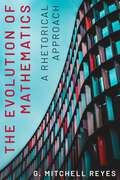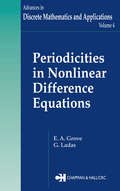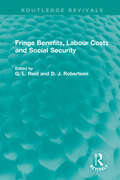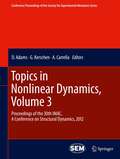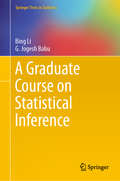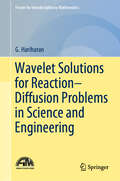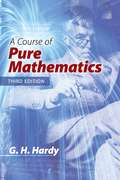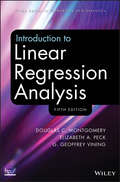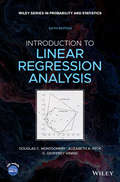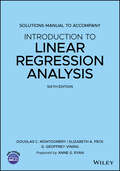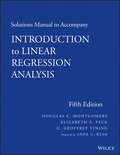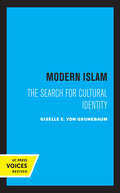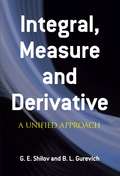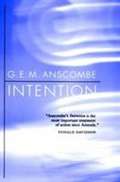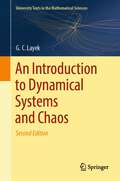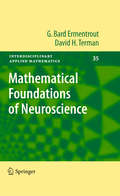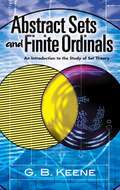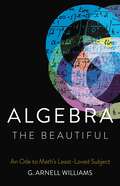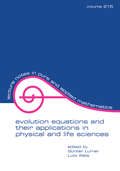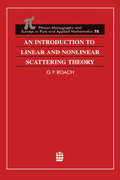- Table View
- List View
The Evolution of Mathematics: A Rhetorical Approach (RSA Series in Transdisciplinary Rhetoric)
by G. Mitchell ReyesThere is a growing awareness among researchers in the humanities and social sciences of the rhetorical force of mathematical discourse—whether in regard to gerrymandering, facial recognition technologies, or racial biases in algorithmic automation. This book proposes a novel way to engage with and understand mathematics via a theoretical framework that highlights how math transforms the social-material world.In this study, G. Mitchell Reyes applies contemporary rhetorical analysis to mathematical discourse, calling into question the commonly held view that math equals truth. Examining mathematics in historical context, Reyes traces its development from Plato’s teaching about abstract numbers to Euclidian geometry and the emergence of calculus and infinitesimals, imaginary numbers, and algorithms. This history reveals that mathematical innovation has always relied on rhetorical practices of making meaning, such as analogy, metaphor, and invention. Far from expressing truth hidden deep in reality, mathematics is dynamic and evolving, shaping reality and our experience of it.By bringing mathematics back down to the material-social world, Reyes makes it possible for scholars of the rhetoric and sociology of science, technology, and math to collaborate with mathematicians themselves in order to better understand our material world and public culture.
Numerical Analysis for Engineers and Scientists
by G. MillerStriking a balance between theory and practice, this graduate-level text is perfect for students in the applied sciences. The author provides a clear introduction to the classical methods, how they work and why they sometimes fail. Crucially, he also demonstrates how these simple and classical techniques can be combined to address difficult problems. Many worked examples and sample programs are provided to help the reader make practical use of the subject material. Further mathematical background, if required, is summarized in an appendix. Topics covered include classical methods for linear systems, eigenvalues, interpolation and integration, ODEs and data fitting, and also more modern ideas like adaptivity and stochastic differential equations.
Periodicities in Nonlinear Difference Equations
by G. Ladas E.A. GroveSharkovsky's Theorem, Li and Yorke's "period three implies chaos" result, and the (3x+1) conjecture are beautiful and deep results that demonstrate the rich periodic character of first-order, nonlinear difference equations. To date, however, we still know surprisingly little about higher-order nonlinear difference equations. During the last
Fringe Benefits, Labour Costs and Social Security (Routledge Revivals)
by G. L. Reid D. J. RobertsonOriginally published in 1965, this book is concerned with an important yet neglected part of economic life ‘fringe benefits’ which employers provide for and on behalf of their employees apart from wages and salaries. The book sets out results of an inquiry into the costs of supplementary labour costs for manual workers, with an account of the various influences which help to explain differences in expenditure by different firms. The book then gives comparative figures for Western European countries and considers some of the economic effects of the European levels of supplementary labour costs. The situation in the USA is discussed, as is the relationship of employer-financed welfare schemes and State social security programmes. Chapters on pensions, sick pay and redundancy payments are included as well as those dealing with the history of paid holidays and subsidized welfare facilities such as canteens.
Geography of South East Asia: தென்கிழக்கு ஆசியா
by G. Krishnamoorthyஇந்த தென்கிழக்கு ஆசிய புவியியல் புத்தகத்தில் தென்கிழக்கு ஆசியாவில் உள்ள மண்வளங்கள். கனிமங்கள், ஆறுகள், இயற்கை போன்றவற்றை பற்றி நாம் தெரிந்து கொள்வதற்கு நமக்கு பேரூதவியாக இருக்கிறது.
Topics in Nonlinear Dynamics, Volume 3
by G. Kerschen A. Carrella D. AdamsTopics in Nonlinear Dynamics, Volume 3, Proceedings of the 30th IMAC, A Conference and Exposition on Structural Dynamics, 2012, the third volume of six from the Conference, brings together 26 contributions to this important area of research and engineering. The collection presents early findings and case studies on fundamental and applied aspects of Structural Dynamics, including papers on: Application of Nonlinearities: Aerospace Structures Nonlinear Dynamics Effects Under Shock Loading Application of Nonlinearities: Vibration Reduction Nonlinear Dynamics: Testing Nonlinear Dynamics: Simulation Nonlinear Dynamics: Identification Nonlinear Dynamics: Localization
A Graduate Course on Statistical Inference (Springer Texts in Statistics)
by G. Jogesh Babu Bing LiThis textbook offers an accessible and comprehensive overview of statistical estimation and inference that reflects current trends in statistical research. It draws from three main themes throughout: the finite-sample theory, the asymptotic theory, and Bayesian statistics. The authors have included a chapter on estimating equations as a means to unify a range of useful methodologies, including generalized linear models, generalized estimation equations, quasi-likelihood estimation, and conditional inference. They also utilize a standardized set of assumptions and tools throughout, imposing regular conditions and resulting in a more coherent and cohesive volume. Written for the graduate-level audience, this text can be used in a one-semester or two-semester course.
An Introduction To The Atomic And Radiation Physics Of Plasmas
by G. J. TallentsPlasmas comprise more than 99% of the observable universe. They are important in many technologies and are key potential sources for fusion power. Atomic and radiation physics is critical for the diagnosis, observation and simulation of astrophysical and laboratory plasmas, and plasma physicists working in a range of areas from astrophysics, magnetic fusion, and inertial fusion utilise atomic and radiation physics to interpret measurements. This text develops the physics of emission, absorption and interaction of light in astrophysics and in laboratory plasmas from first principles using the physics of various fields of study including quantum mechanics, electricity and magnetism, and statistical physics. Linking undergraduate level atomic and radiation physics with the advanced material required for postgraduate study and research, this text adopts a highly pedagogical approach and includes numerous exercises within each chapter for students to reinforce their understanding of the key concepts.
Wavelet Solutions for Reaction–Diffusion Problems in Science and Engineering (Forum for Interdisciplinary Mathematics)
by G. HariharanThe book focuses on how to implement discrete wavelet transform methods in order to solve problems of reaction–diffusion equations and fractional-order differential equations that arise when modelling real physical phenomena. It explores the analytical and numerical approximate solutions obtained by wavelet methods for both classical and fractional-order differential equations; provides comprehensive information on the conceptual basis of wavelet theory and its applications; and strikes a sensible balance between mathematical rigour and the practical applications of wavelet theory. The book is divided into 11 chapters, the first three of which are devoted to the mathematical foundations and basics of wavelet theory. The remaining chapters provide wavelet-based numerical methods for linear, nonlinear, and fractional reaction–diffusion problems. Given its scope and format, the book is ideally suited as a text for undergraduate and graduate students of mathematics and engineering.
A Course of Pure Mathematics
by G. H. HardyThis is an EXACT reproduction of a book published before 1923. This IS NOT an OCR'd book with strange characters, introduced typographical errors, and jumbled words. This book may have occasional imperfections such as missing or blurred pages, poor pictures, errant marks, etc. that were either part of the original artifact, or were introduced by the scanning process. We believe this work is culturally important, and despite the imperfections, have elected to bring it back into print as part of our continuing commitment to the preservation of printed works worldwide. We appreciate your understanding of the imperfections in the preservation process, and hope you enjoy this valuable book.
A Course of Pure Mathematics (Cambridge Mathematical Library)
by G. H. HardyOriginally published in 1908, this classic calculus text transformed university teaching and remains a must-read for all students of introductory mathematical analysis. Clear, rigorous explanations of the mathematics of analytical number theory and calculus cover single-variable calculus, sequences, number series, and properties of cos, sin, and log. Meticulous expositions detail the fundamental ideas underlying differential and integral calculus, the properties of infinite series, and the notion of limit. An expert in the fields of analysis and number theory, author G. H. Hardy taught for decades at both Cambridge and Oxford. A Course of Pure Mathematics is suitable for college and high school students and teachers of calculus as well as fans of pure math. Each chapter includes demanding problem sets that allow students to apply the principles directly, and four helpful Appendixes supplement the text.
Introduction to Linear Regression Analysis
by Douglas C. Montgomery Elizabeth A. Peck G. Geoffrey ViningAs the Solutions Manual, this book is meant to accompany the main title, Introduction to Linear Regression Analysis, Fifth Edition. Clearly balancing theory with applications, this book describes both the conventional and less common uses of linear regression in the practical context of today's mathematical and scientific research. Beginning with a general introduction to regression modeling, including typical applications, the book then outlines a host of technical tools that form the linear regression analytical arsenal, including: basic inference procedures and introductory aspects of model adequacy checking; how transformations and weighted least squares can be used to resolve problems of model inadequacy; how to deal with influential observations; and polynomial regression models and their variations. The book also includes material on regression models with autocorrelated errors, bootstrapping regression estimates, classification and regression trees, and regression model validation.
Introduction to Linear Regression Analysis (Wiley Series in Probability and Statistics #821)
by Douglas C. Montgomery Elizabeth A. Peck G. Geoffrey ViningA comprehensive and current introduction to the fundamentals of regression analysis Introduction to Linear Regression Analysis, 6th Edition is the most comprehensive, fulsome, and current examination of the foundations of linear regression analysis. Fully updated in this new sixth edition, the distinguished authors have included new material on generalized regression techniques and new examples to help the reader understand retain the concepts taught in the book. The new edition focuses on four key areas of improvement over the fifth edition: New exercises and data sets New material on generalized regression techniques The inclusion of JMP software in key areas Carefully condensing the text where possible Introduction to Linear Regression Analysis skillfully blends theory and application in both the conventional and less common uses of regression analysis in today's cutting-edge scientific research. The text equips readers to understand the basic principles needed to apply regression model-building techniques in various fields of study, including engineering, management, and the health sciences.
Solutions Manual to accompany Introduction to Linear Regression Analysis
by Douglas C. Montgomery Elizabeth A. Peck G. Geoffrey ViningINTRODUCTION TO LINEAR REGRESSION ANALYSIS
Solutions Manual to accompany Introduction to Linear Regression Analysis (Wiley Series In Probability And Statistics Ser. #821)
by Douglas C. Montgomery Elizabeth A. Peck G. Geoffrey ViningAs the Solutions Manual, this book is meant to accompany the main title, Introduction to Linear Regression Analysis, Fifth Edition. Clearly balancing theory with applications, this book describes both the conventional and less common uses of linear regression in the practical context of today's mathematical and scientific research. Beginning with a general introduction to regression modeling, including typical applications, the book then outlines a host of technical tools that form the linear regression analytical arsenal, including: basic inference procedures and introductory aspects of model adequacy checking; how transformations and weighted least squares can be used to resolve problems of model inadequacy; how to deal with influential observations; and polynomial regression models and their variations. The book also includes material on regression models with autocorrelated errors, bootstrapping regression estimates, classification and regression trees, and regression model validation.
Modern Islam: The Search for Cultural Identity
by G. E. Von GrunebaumThis title is part of UC Press's Voices Revived program, which commemorates University of California Press’s mission to seek out and cultivate the brightest minds and give them voice, reach, and impact. Drawing on a backlist dating to 1893, Voices Revived makes high-quality, peer-reviewed scholarship accessible once again using print-on-demand technology. This title was originally published in 1962.
Integral, Measure and Derivative: A Unified Approach
by G. E. Shilov B. L. GurevichThis graduate-level textbook and monograph defines the functions of a real variable through consistent use of the Daniell scheme, offering a rare and useful alternative to customary approaches. The treatment can be understood by any reader with a solid background in advanced calculus, and it features many problems with hints and answers. "The exposition is fresh and sophisticated," declared Sci-Tech Book News, "and will engage the interest of accomplished mathematicians." Part one is devoted to the integral, moving from the Reimann integral and step functions to a general theory, and obtaining the "classical" Lebesgue integral in n space. Part two constructs the Lebesgue-Stieltjes integral through the Daniell scheme using the Reimann-Stieltjes integral as the elementary integral. Part three develops theory of measure with the general Daniell scheme, and the final part is devoted to the theory of the derivative.
Intention
by G. E. M. AnscombeIntention is one of the masterworks of twentieth-century philosophy in English. First published in 1957, it has acquired the status of a modern philosophical classic. The book attempts to show in detail that the natural and widely accepted picture of what we mean by an intention gives rise to insoluble problems and must be abandoned. This is a welcome reprint of a book that continues to grow in importance.
An Introduction to Dynamical Systems and Chaos (University Texts in the Mathematical Sciences)
by G. C. LayekThis book discusses continuous and discrete nonlinear systems in systematic and sequential approaches. The unique feature of the book is its mathematical theories on flow bifurcations, nonlinear oscillations, Lie symmetry analysis of nonlinear systems, chaos theory, routes to chaos and multistable coexisting attractors. The logically structured content and sequential orientation provide readers with a global overview of the topic. A systematic mathematical approach has been adopted, featuring a multitude of detailed worked-out examples alongside comprehensive exercises. The book is useful for courses in dynamical systems and chaos and nonlinear dynamics for advanced undergraduate, graduate and research students in mathematics, physics and engineering. The second edition of the book is thoroughly revised and includes several new topics: center manifold reduction, quasi-periodic oscillations, Bogdanov–Takens, period-bubbling and Neimark–Sacker bifurcations, and dynamics on circle. The organized structures in bi-parameter plane for transitional and chaotic regimes are new active research interest and explored thoroughly. The connections of complex chaotic attractors with fractals cascades are explored in many physical systems. Chaotic attractors may attain multiple scaling factors and show scale invariance property. Finally, the ideas of multifractals and global spectrum for quantifying inhomogeneous chaotic attractors are discussed.
Mathematical Foundations of Neuroscience
by David H. Terman G. Bard ErmentroutThis book applies methods from nonlinear dynamics to problems in neuroscience. It uses modern mathematical approaches to understand patterns of neuronal activity seen in experiments and models of neuronal behavior. The intended audience is researchers interested in applying mathematics to important problems in neuroscience, and neuroscientists who would like to understand how to create models, as well as the mathematical and computational methods for analyzing them. The authors take a very broad approach and use many different methods to solve and understand complex models of neurons and circuits. They explain and combine numerical, analytical, dynamical systems and perturbation methods to produce a modern approach to the types of model equations that arise in neuroscience. There are extensive chapters on the role of noise, multiple time scales and spatial interactions in generating complex activity patterns found in experiments. The early chapters require little more than basic calculus and some elementary differential equations and can form the core of a computational neuroscience course. Later chapters can be used as a basis for a graduate class and as a source for current research in mathematical neuroscience. The book contains a large number of illustrations, chapter summaries and hundreds of exercises which are motivated by issues that arise in biology, and involve both computation and analysis. Bard Ermentrout is Professor of Computational Biology and Professor of Mathematics at the University of Pittsburgh. David Terman is Professor of Mathematics at the Ohio State University. "This excellent 422 page hardcover publication is an accessible and concise monograph. ... Mathematical Foundations is a timely contribution that will prove useful to mathematics graduate students and faculty interested in the application of dynamical systems theory to cellular and systems neuroscience. ... welcome addition to the pedagogical literature. ... For mathematics graduate students who are investigating the field of computational neuroscience, I would highly recommend Mathematical Foundations of Neuroscience as their first computational neuroscience text." (Gregory D. Smith, The Mathematical Association of America, December, 2010) "...it is a good substitute for a lengthy regime of abstract maths classes, but it is also well integrated into the field of neuroscience. Ermentrout and Terman's book conveys much of the advanced mathematics used in theoretical neuroscience today." (Vincent A. Billock, Nature)
Abstract Sets and Finite Ordinals: An Introduction to the Study of Set Theory
by G. B. KeeneThis text unites the logical and philosophical aspects of set theory in a manner intelligible both to mathematicians without training in formal logic and to logicians without a mathematical background. It combines an elementary level of treatment with the highest possible degree of logical rigor and precision.Starting with an explanation of all the basic logical terms and related operations, the text progresses through a stage-by-stage elaboration that proves the fundamental theorems of finite sets. It focuses on the Bernays theory of finite classes and finite sets, exploring the system's basis and development, including Stage I and Stage II theorems, the theory of finite ordinals, and the theory of finite classes and finite sets. This volume represents an excellent text for undergraduates studying intermediate or advanced logic as well as a fine reference for professional mathematicians.
Algebra the Beautiful: An Ode to Math's Least-Loved Subject
by G. Arnell WilliamsA mathematician reveals the hidden beauty, power, and—yes—fun of algebra What comes to mind when you think about algebra? For many of us, it&’s memories of dull or frustrating classes in high school. Award-winning mathematics professor G. Arnell Williams is here to change that. Algebra the Beautiful is a journey into the heart of fundamental math that proves just how amazing this subject really is. Drawing on lessons from twenty-five years of teaching mathematics, Williams blends metaphor, history, and storytelling to uncover algebra&’s hidden grandeur. Whether you&’re a teacher looking to make math come alive for your students, a parent hoping to get your children engaged, a student trying to come to terms with a sometimes bewildering subject, or just a lover of mathematics, this book has something for you. With a passion that&’s contagious, G. Arnell Williams shows how each of us can grasp the beauty and harmony of algebra.
Evolution Equations and Their Applications in Physical and Life Sciences: Proceedings Of The Bad Herrenalb (karlsruhe), Germany, Conference (Lecture Notes in Pure and Applied Mathematics)
by G LumerThis volume presents a collection of lectures on linear partial differntial equations and semigroups, nonlinear equations, stochastic evolutionary processes, and evolution problems from physics, engineering and mathematical biology. The contributions come from the 6th International Conference on Evolution Equations and Their Applications in Physica
Real Estate Investment: A Value Based Approach
by G Jason Goddard Bill MarcumThis book fills a gap in the existing resources available to students and professionals requiring an academically rigorous, but practically orientated source of knowledge about real estate finance. Written by a bank vice-president who for many years has practiced as a commercial lender and who teaches real estate investment at university level, and an academic whose area of study is finance and particularly valuation, this book will lead readers to truly understand the fundamentals of making a sound real estate investment decision. The focus is primarily on the valuation of leased properties such as apartment buildings, office buildings, retail centers, and warehouse space, rather than on owner occupied residential property.
An Introduction to Linear and Nonlinear Scattering Theory (Monographs And Surveys In Pure And Applied Math #78)
by G F RoachThis monograph has two main purposes, first to act as a companion volume to more advanced texts by gathering together the principal mathematical topics commonly used in developing scattering theories and, in so doing, provide a reasonable, self-contained introduction to linear and nonlinear scattering theory for those who might wish to begin working in the area. Secondly, to indicate how these various aspects might be applied to problems in mathematical physics and the applied sciences. Of particular interest will be the influence of boundary conditions.
